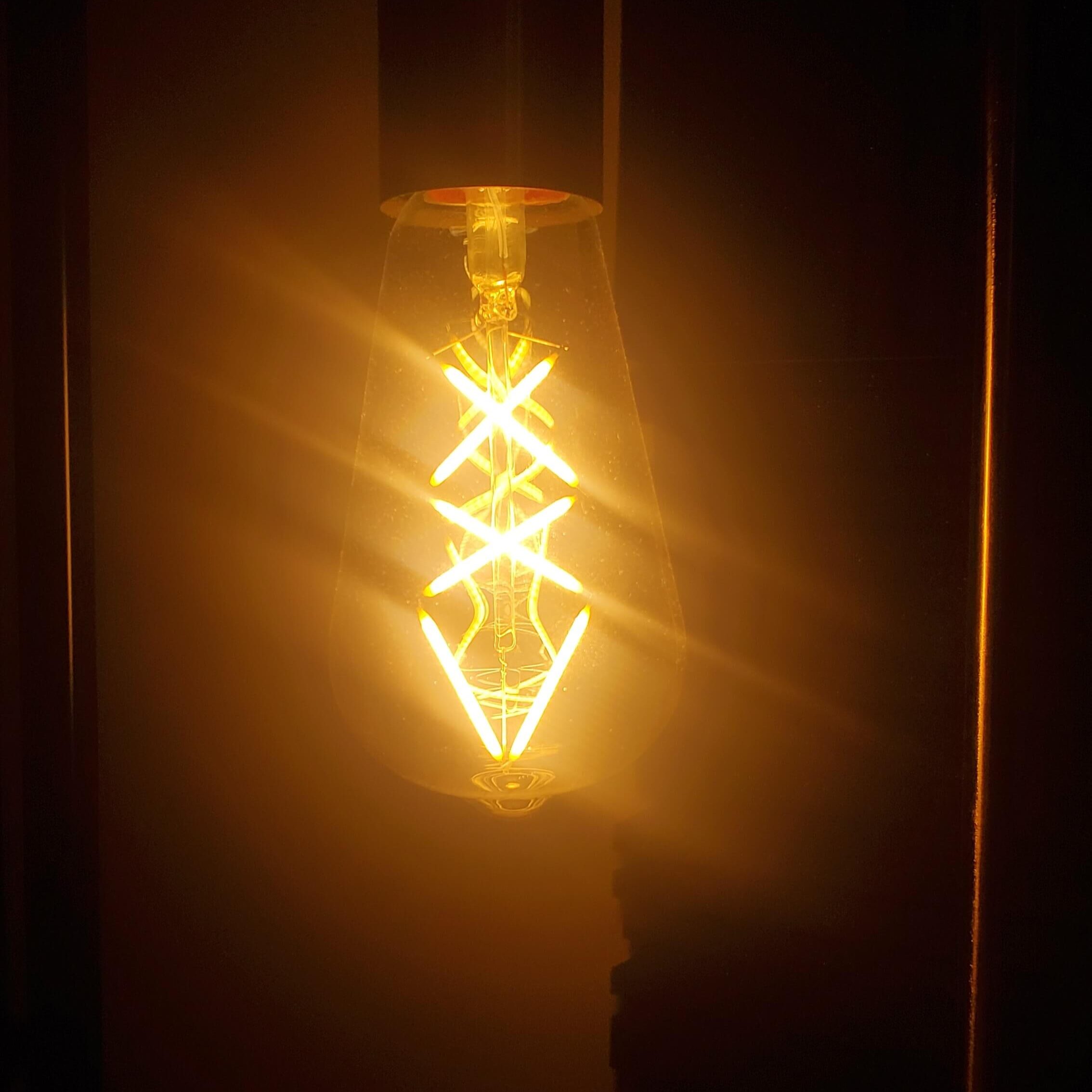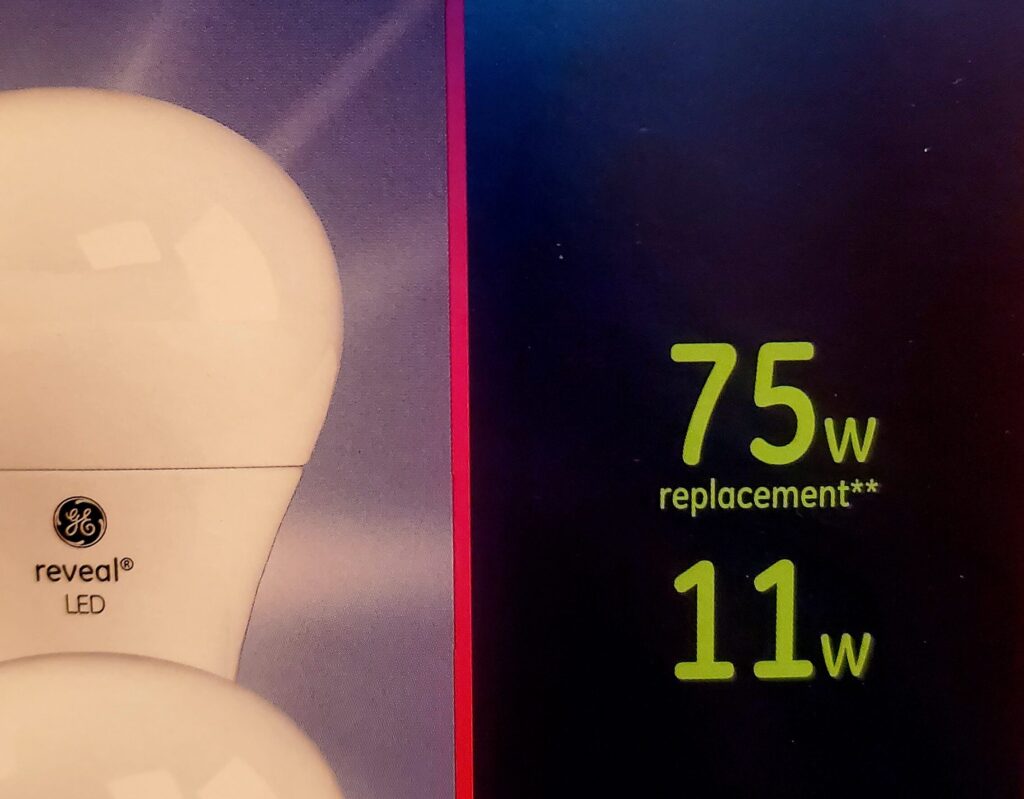Links you click on this page may be affiliate links that earn us a commission. We always recommend products that we have personally used and tested.
What are LED Lights?
| Space Efficiency | Cost Efficiency | Time Efficiency | Product Quality | Overall |
| N/A | 10/10 | 9/10 | 10/10 | 9.7/10 |
LED stands for light emitting diode. They are a specific kind of lightbulb that was originally developed as indicator lights for electrical equipment. LED lights were originally used for applications like computing and communication systems. They needed to be durable and long-lasting, without producing a lot of heat that could cause excess heat in electronic systems. Since their early inception in the 1920’s, LEDs were adopted for computer circuit boards in the 1960’s and in recent years have seen a rapid rise in general consumer lighting solutions.
What I mean by that is that LEDs are now a viable, sustainable, and efficient way of lighting your home.
Compared to halogen or incandescent bulbs, the kind that have primarily lit homes since the invention of the lightbulb and the electrical grid, LEDs can use up to 90% less energy. They also release more of that energy as light, instead of heat. In addition, they don’t burn out like traditional light bulbs. LEDs eventually dim over the course of their life span, but also last up to 10 times longer than traditional light bulbs.
So, you are probably wondering if you should switch primarily to LED lights in your home. There are a few things to consider first.
Functionality and Style

LED light bulbs are much more versatile than incandescent light bulbs, and they come in many form factors. You can obviously just go through your house and replace all your standard incandescent bulbs with comparable LEDs like these, which come in the colors soft white, warm light, and daylight.
However, I’m also a big fan of products like these floor lamps from Govee. I use three of them to light my TV room. They connect with smart home ecosystems like Amazon Alexa or Google Home for voice and routine control. They also can be set to any color by voice with smart home integration. And, one of the best features, they have a music setting where they will respond dynamically to music being played in your room, for a great immersion experience.

You can even get those kinds of dynamic settings with traditionally-shaped light bulbs, replacing your old incandescent bulbs. The same company, Govee, has these bulbs that also integrate with smart homes and change color and brightness on command.
I also love these solar-powered string LEDs for hanging around the campfire, without having to run power out into the yard from the house. For indoor ambient lighting you can use something like these.
I replaced the dingy bulbs in my garage with these super bright LED panels that screw right into a normal socket. You can direct the panels where you want them to go to make sure you don’t have any dark spots in your garage, and get your projects done right!
Finally, for a unique and class form factor, check out these Edison style LED bulbs.

As you can see, not only are LEDs more energy efficient and longer lasting, but they have the ability to bring enhanced functionality to every part of your home. That’s a win-win in my book.
Brightness and Wattage
Electrical sockets are rated for a specific amount of wattage, meaning you want to check what kind of incandescent bulb you have in there currently. It might be something like a 60W or 100W bulb. LEDs are often marketed as being either a 60W or 100W replacement, but that doesn’t mean that it is actually using the same wattage as their incandescent equivalent. It just means that they produce an equivalent amount of light, often measured in lumens.
In fact, because LED technology produces less heat and uses less energy, it’s perfectly safe to use a 100W bulb in a socket rated for 60W, because the 100W replacement LED is still going to use less than 60W.
You can see in these GE brand LED lightbulbs that I’ve purchased, they are 75W replacement bulbs, but only use 11 Watts of power, an efficiency gain of 85.4%.

If I was replacing a 60W incandescent bulb, I would personally start with testing a 60W LED replacement and see if it’s bright enough for your use. That’s going to use less power than a 100W replacement, but if it’s not bright enough you can safely upgrade to 100W replacement LEDs.
This is great news because LEDs can actually produce more light with less power. You can light your spaces more efficiently and with fewer bulbs.
LED Bulb Cost: Calculator
To make things super easy for you to figure out how much money you could save by switching to LED light bulbs, we’ve built a handy calculator for it. You need to do a little work to estimate how many bulbs you would be replacing and how many hours those bulbs get used each day.
The calculator factors in both energy usage and bulb replacement costs based on best case life spans for both incandescent bulbs (1000 hours) and LED bulbs (50,000 hours). However, the vast majority of the savings happens on the energy consumption side of the equation. Even if you are going to replace your LED bulbs with high-end smart home bulbs that cost $8-10 each, you are still going to massively save over the long run, even if it’s a setback in year 1.
The calculator also takes into account the up-front replacement cost, so if you set “Number Of Years” to 1 the savings might be negligible or negative depending on the cost of the LEDs you plan to purchase. However, after the second year of having replacement bulbs you are almost guaranteed to have made a significant return on your investment.
For the energy cost, the default is $0.161/kWh which is the national average in the United States in 2024, but you could enter exactly what you pay by looking at your most recent electrical bill.

